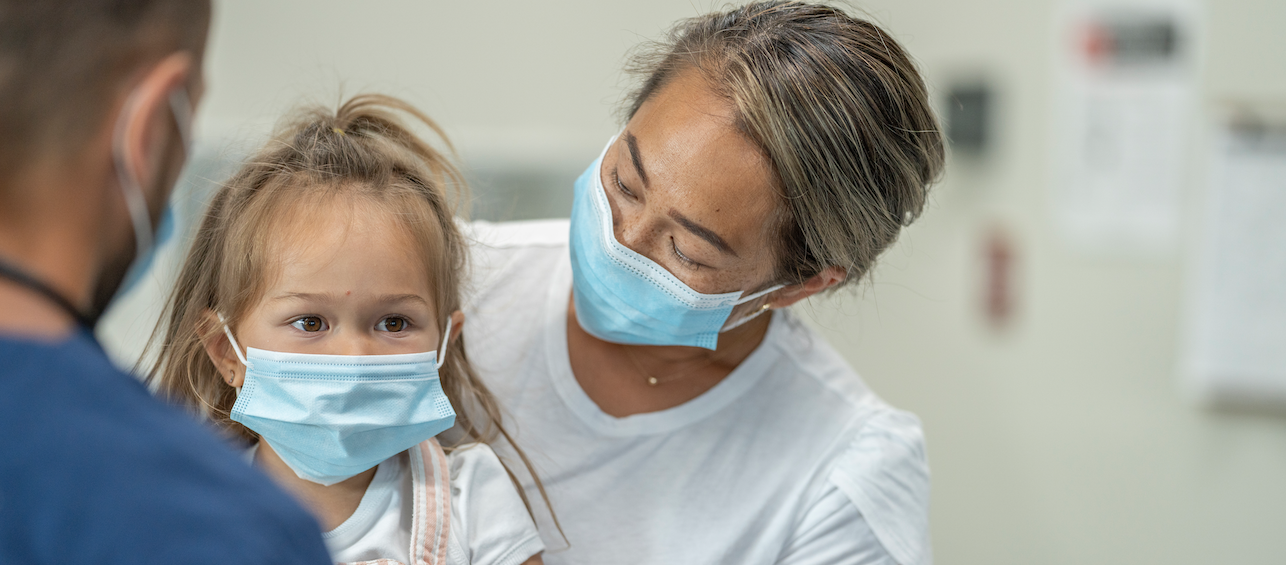I’d like to spread awareness for a public health issue impacting both kids and adults: a mislabeled amoxicillin allergy. I say mislabeled because many people who think they are allergic to amoxicillin are not actually allergic to it. Or they were once allergic to it and have since outgrown it.
Amoxicillin, a common penicillin, is the most frequently prescribed antibiotic in children and adults. Approximately 10% of the population are labeled as having an amoxicillin allergy. However, it’s estimated that 90-95% of people who are thought to be allergic can tolerate amoxicillin after seeing an allergist. Therefore, the true rates of amoxicillin allergy are more likely around 1% of the population, or perhaps even less than that.
Mislabeled Amoxicillin Allergy is an Individual and Public Health Issue
Mislabeled amoxicillin allergies are an important public health issue because once that label is on a patient’s medical record, it is often never evaluated again. We all know adults who avoid amoxicillin because their parents told them they had an allergic reaction or an amoxicillin rash when they were little. When this adult needs an antibiotic, a non-amoxicillin antibiotic is used, which is often broad-spectrum.
This pattern then continues throughout the adult’s life. It’s often stated, “That’s ok, we can just avoid the amoxicillin. There are plenty of alternatives.” However, research has shown that this can actually harm both the patient and the public. Substitutes are more expensive, less effective and have more side effects. For example, a Clostridum difficile (C. diff) infection occurs when a broad-spectrum antibiotic kills off good bacteria in the gut. C. diff infections can be both a life-threatening disease and a long-term, chronic issue.
Further, frequent use of broader-spectrum antibiotics has led to the development of multidrug-resistant organisms such as MRSA. MRSA can harm both healthy individuals and our sickest kids and adults. This is because we often have to use even more powerful antibiotics that lead to more side effects and more multidrug-resistant organisms – a disastrous cycle! Amoxicillin is a safe, highly effective and targeted antibiotic. It is associated with fewer side effects and multidrug-resistant organisms. Therefore, it’s really important to de-label an amoxicillin allergy when appropriate (which as you can see above is almost every time!).
How The Problem Started
You’re probably wondering how we got ourselves into this situation. Multiple factors have likely played a role. First, many think that getting a rash or hives while on amoxicillin is an allergic reaction to the drug. In reality, most commonly it is a virus causing the rash or hives. Further complicating things is that “normal” side effects of taking amoxicillin can include a stomach upset and diarrhea. Patients and healthcare professionals often mistakenly consider these side effects as an allergy. Finally, some children and adults are mislabeled as having an amoxicillin allergy due to a family history.
What a True Amoxicillin Allergic Reaction Looks Like
A true amoxicillin allergic reaction will cause an immediate onset (usually within an hour of a dose) of rash/hives, swelling, shortness of breath and even anaphylaxis. This is called an IgE mediated reaction. Additionally, there are other delayed non-IgE mediated reactions to amoxicillin that can be severe (such as rare skin blistering reactions). This is why it’s important to see an allergist. He or she can help figure out if you are one of over 90% who don’t have an allergy vs the aforementioned true reactions. The good news is that even if you have a true allergy, 90% of people will outgrow it within 10 years. The bad news is that most people are unaware of this and the label will remain on their chart – unless something is done about it.
What Can Be Done About It
As a result, there is a big movement to get both kids and adults de-labeled. Allergy evaluation and testing is the best way to make this happen. There are two different types of testing: skin testing and/or an oral amoxicillin challenge. Skin testing involves pricking a tiny amount of the substance under the skin. With an oral challenge, we will give a single or graded dose of the drug and carefully monitor the patient for a reaction. Low-risk allergy usually involves a challenge only. Higher-risk allergy usually involves both skin testing and the challenge. The allergist helps figure out what risk a patient falls into based on the history. If your child passes those tests, it is safe to begin taking amoxicillin again, should the need arise.
Push For De-Labeling
If you or your child has “amoxicillin allergy” on your medical record, I urge you to talk to your healthcare professional about it. This includes patients who had a true allergic reaction at one point in their lives. Explain how concerned you are about having to take broader-spectrum antibiotics and the potential for developing multidrug-resistant organisms and other side effects. He or she may recommend a referral to an allergist for testing. Please share this post with your friends and families so that more are aware and can take the necessary next steps.
We have created a new amoxicillin allergy de-labeling clinic: Penicillin Allergy Testing Services. Your child can be seen by an allergist to have his or her allergy evaluated and hopefully de-labeled within the same visit! For more information, call 513-517-7287 (PATS) or email PATS@cchmc.org.






Dr Durrani
What a fabulous read –
You have provided strong “talking points” to share with our families – as well as an evidence based plan for evaluation
Thank You For Sharing Your Insight